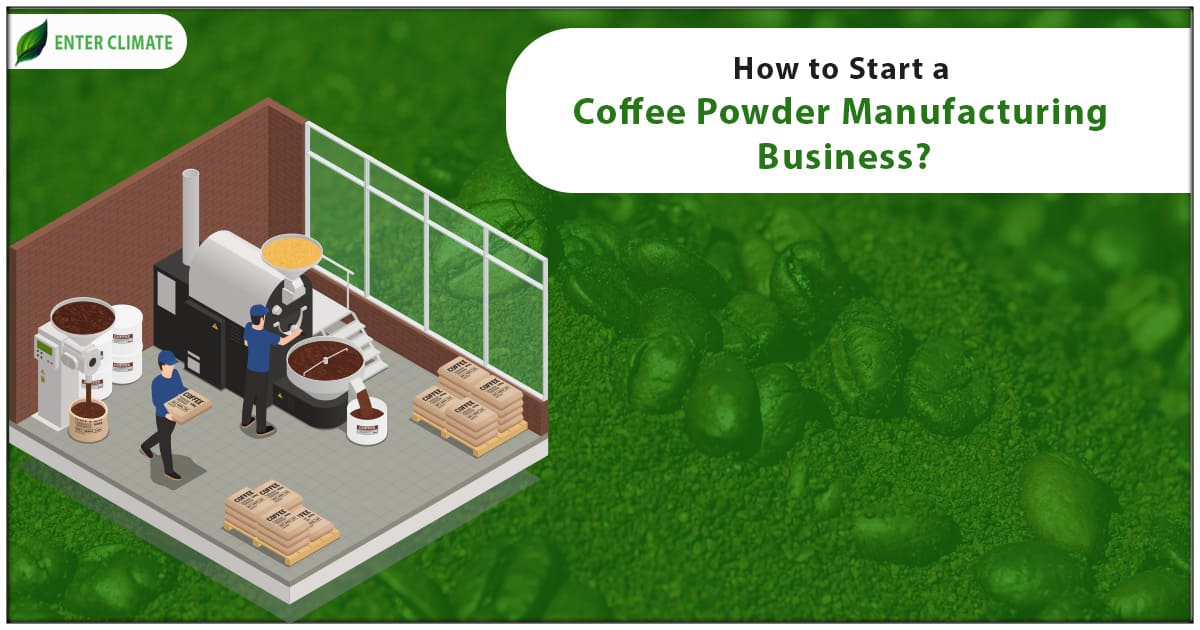How to Start a Biodegradable Cutlery Business Based on Rice Husk?
 27 Jun, 2023
27 Jun, 2023 
In 2018, the global market size for Biodegradable Cutlery Business was valued at USD 33.9 million. It is estimated that the market will experience a significant growth rate, with a CAGR of 5.9% during the forecast period from 2019 to 2025. The increasing awareness regarding the negative environmental impacts of non-biodegradable waste is anticipated to positively influence the market’s expansion. The main factors driving the market’s growth include the rising awareness of using biodegradable products and understanding their environmental impact. Furthermore, stringent government regulations concerning the use of plastic also contribute to the market’s growth.
Cutlery Manufacturing Industry Insights
The global market for biodegradable cutlery was valued at USD 33.9 million in 2018 and is anticipated to experience a significant growth rate, with a Compound Annual Growth Rate (CAGR) of 5.9%, from 2019 to 2025. The increasing recognition of the harmful effects of non-biodegradable waste, such as plastic, is expected to impact the market’s expansion positively.
Strict regulations imposed by the Indian governments to ban Single use and non-biodegradable plastics and business-supportive initiatives are projected to contribute to the market’s growth. Additionally, the growing awareness regarding the negative consequences of non-biodegradable materials is expected to drive the market’s progress further.
Cutlery Businesses based on Biodegradable Raw Materials.
Biodegradable items with which Biodegradable Cutlery Business can build are as follows:
- Wooden/Bamboo: Bamboo and wooden spoons are highly favoured due to their affordable price compared to plastic, easy availability and customers’ willingness to choose sustainable options.
- Areca/Palm Leaves: Areca leaves were primarily used for making disposable plates and bowls. However, manufacturers started utilizing offcuts from the production of plates and bowls to make spoons, reducing waste and increasing the yield from areca leaves. Despite being made from waste, areca cutlery tends to be more expensive due to labour costs and low productivity rates.
- Edible: Edible cutlery has gained significant attention in recent years. These compostable utensils are typically made from a blend of various flours, water, spices, and flavourings, making them completely consumable.
- Stainless Steel: Replacing plastic cutlery with stainless steel requires additional changes to the business model and operations to ensure proper recovery, washing, and multiple reuses. These considerations should be considered before exploring other single-use alternatives to plastic cutlery.
- Bioplastic/ Compostable Plastic: Biodegradable and compostable plastic products are increasingly substitutes for single-use plastic items. Companies see using biodegradable plastics as an innovative approach to addressing plastic pollution. There is greater acceptance of replacing flexible bags and films with biodegradable plastics compared to rigid products such as cutlery.
Rice Husk-Based Biodegradable Cutlery
Rice husk-based biodegradable cutlery is produced from the outer shells of rice grains, known as rice husks. Usually considered waste, these husks can effectively manufacture items such as disposable plates, bowls, cups, and utensils. Rice husk-based biodegradable cutlery presents a sustainable option in contrast to conventional plastic or paper disposables. It undergoes rapid decomposition and does not release harmful substances into the environment. Moreover, it provides an environmentally friendly substitute for single-use plastics.
Uses and Applications
There are multiple approaches to utilizing rice husk-based biodegradable cutlery. You can sell these products in large quantities and offer discounts for bulk purchases. Additionally, making them available at health-food stores or online retailers. Collaborating with local restaurants and hotels to supply them with cost-effective and conveniently storable eco-friendly cutlery is also possible.
Rice husks are an excellent material for biodegradable cutlery due to their inherent strength, durability, and lightweight nature. Moreover, they can be easily moulded into various shapes and sizes. Rice husk-based biodegradable cutlery is suitable for hot and cold foods and can be disposed of in compost bins after use.
Manufacturing in Biodegradable Cutlery Business
The Manufacturing Process of Biodegradable Cutlery is as follows:
- Raw materials, specifically rice husks, are collected for the manufacturing process of Rice Husk-Based Biodegradable Cutlery.
- The collected husks are then cleaned and dried to prepare them for further processing.
- Once the husks are dry, they are shredded into the desired size pieces.
- The shredded pieces are then moulded into the shape of cutlery using a mould.
- After moulding, the cutlery is dried and prepared for sale.
Benefits of Biodegradable Cutlery
The benefits of Starting Rice Husk Based Biodegradable Cutlery Business are as follows:
- Starting a rice husk-based biodegradable cutlery business offers numerous advantages.
- It contributes to environmental preservation by offering an eco-friendly alternative to conventional plastic cutlery.
- Rice husk-based biodegradable cutlery is known for its durability, making it qualified for withstanding usage as disposable cutlery.
- The production of rice husk-based cutlery is cost-effective, enabling competitive pricing in the market.
- Procedure for Setting up the Business
Step 1: Gather necessary information and conduct Market Research
After proper market research, determine the key requirements, such as a regular supply of rice husk, availability of utilities such as electricity and water connection, a suitable location for the manufacturing unit, and demand in the market, will be required.
Step 2: Obtain the required Licences and Approvals
Apply for the required license for the biodegradable cutlery manufacturing business. Start the unit as an individual (proprietorship), partnership firm, or registered private company.
- Identify the appropriate provisions for company registration based on its class or type.
- After registration, obtain the Memorandum of Association (MOA), and Director Identification Number (DIN) and consider applying for trademark registration. Once the company is registered, apply for and obtain the Goods and Services Tax Identification Number[1] (GSTIN).
- Complete the registration process for the Goods and Services Tax Identification Number (GSTIN).
- Apply for the Permanent Account Number (PAN) Card to obtain it for your company. Fulfil necessary statutory requirements to initiate operations.
Step 3: Staffing and Installation of Machinery
Install the required machinery and create the infrastructure for biodegradable plate manufacturing once approvals are obtained. Hire staff and commence production of biodegradable plates.
Process of making Biodegradable Cutlery
The entire setup consists of a pulping system, forming equipment high-pressure water system, a vacuum system and an air compressor system. Together these components will be used to produce disposable pulp-moulded cutlery. The production line can also use pulp from sugarcane, bamboo, wood, reeds, straw and other pulp boards as raw materials. The materials are prepared into a pulp with a certain concentration through the processes of pulping, refining, adding chemical additives, etc. They are evenly attached to a special metal mould to form a wet blank product. A disposable pulp-moulded tableware product is produced through the processes of drying, hot pressing, trimming and stacking.
Conclusion
Starting a Biodegradable Cutlery Business presents a promising opportunity in the market. Rice husks, often considered waste, can be transformed into durable and eco-friendly cutlery. This sustainable alternative to traditional plastic cutlery benefits the environment and offers strength and durability for practical use. Collaborating with local authorities, restaurants, and hotels can help create a steady customer base and ensure a consistent supply of rice husks. It is recommended to seek expert guidance while starting a Biodegradable Cutlery Business to experience a hassle-free process during the initial stages of the business.
FAQ
The affordability of rice husk-based biodegradable cutlery manufacturing makes it a competitive option in the market. The versatility of rice husks allows for various shapes and sizes of cutlery, catering to different consumer needs. Moreover, the compostable nature of these products enables easy disposal, further promoting sustainable practices.
The global market for biodegradable cutlery was valued at USD 33.9 million in 2018 and is anticipated to experience a significant growth rate, with a CAGR of 5.9%, from 2019 to 2025. The increasing recognition of the harmful effects of non-biodegradable waste is expected to positively impact the market’s expansion.
One of the best materials that can be used as biodegradable cutlery is made from bamboo. As bamboo is a natural and renewable resource, its production process is of low impact.
The advantages of biodegradable cutlery are:
· Environmentally friendly and sustainable
· Cost-effective
· Healthier for humans and animals
Biodegradable plastics production is growing at a steady rate and has a huge scope in the future. It is estimated that 2.6 million tons will be produced by 2023.
Read our Article: How to Start a Biodegradable Plate Manufacturing Business?













